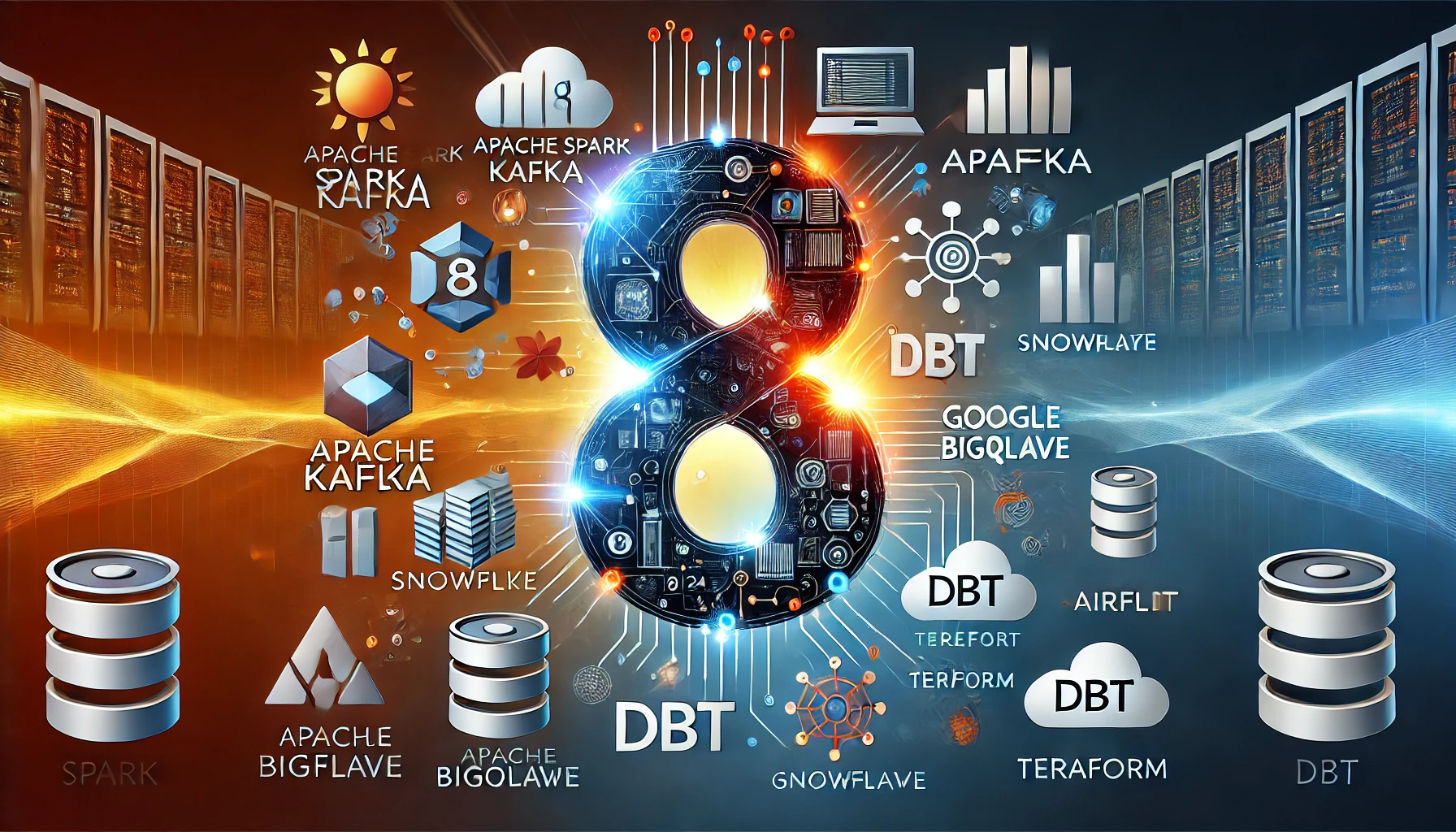
In the world of working with data, it’s essential to keep up with the latest tools for anyone who wants to succeed in data engineering. As we move into 2024, some essential tools can help you improve your skills or advance your career. Whether you’re already experienced or just beginning out, knowing about these tools can give you an advantage. In this article, we’ll see the 8 key data engineering tools you should learn about this year. If you want to make the most of these tools, investing in data engineering training is a smart move. It’ll help you understand these important tools and make you stand out in the job market. By learning and using these tools effectively, you’ll be all set to handle the challenges of modern data engineering and grow in your career. Let’s explore the top 8 data engineering tools you should master this year.
- Apache Spark– Apache Spark is a really important tool for handling big data. It’s known for being fast and flexible, which makes it good for handling large amounts of data. Spark can do things like process data in batches, run real-time queries, and work on machine-learning tasks. It also has features for SQL, streaming, and graph processing. If you’re searching to boost your data engineering skills, learning Spark is essential. It will help you a lot in handling and analyzing data. Getting training in Spark can give you a great boost in your career.
- Apache Kafka– Apache Kafka is the top tool for managing real-time data and streaming. It efficiently handles large amounts of data quickly and reliably, which is super useful for businesses that need to react fast to changes and get instant insights. Kafka for real-time processing is crucial to keep up in the business world. If you’re thinking about a data analyst boot camp with job placement, learning Kafka can give you a big advantage. It’s a really valuable skill that can make you more appealing to your employers or boost your job opportunities.
- Snowflake- It is a popular cloud tool for storing and handling data. It’s known for being easy to use and able to handle large amounts of data. Unlike older systems, Snowflake keeps computing and storage separate, which helps manage resources better and control costs. It works well with different data sources and supports SQL queries, making it a great choice for modern data engineers. Its simple design and useful features make Snowflake a valuable addition to any data engineering toolkit.
- Google BigQuery– It is an efficient and cost-effective cloud data tool. It can deal with large datasets and run complex queries fast, all without you needing to worry about servers. BigQuery works well with other Google Cloud services and supports real-time data analysis, which is a big deal for data engineers. Its user-friendly setup and cool machine-learning features make it a top pick for managing and analyzing data this year.
- Apache Airflow– It is a handy open-source tool for automating and scheduling data tasks. It’s easy to use and helps manage complex data workflows. With Airflow, you can set up and track your data processes more easily, and it works well with different data sources. It also helps you handle task dependencies smoothly, so everything runs in the right order. Airflow shows you how your workflows are performing and helps you keep everything organized. This makes it a crucial tool for anyone in data engineering, as it simplifies managing and automating data tasks.
- Data Build Tool– It is a great tool for working with data in a data warehouse. It helps data engineers create and manage SQL queries easily. With debt, you can transform and organize your data straightforwardly. It also makes sure that your data models are reliable by including features for documentation, testing, and tracking changes. As more companies rely on data for their decisions, but is essential for keeping data accurate and consistent. Its focus on documenting and testing data ensures that what you work with is always high-quality and dependable.
- DataBricks– It is a versatile platform that combines data engineering and data science into one tool. It provides a shared workspace where both data engineers and data scientists can work together on projects. DataBricks uses Apache Spark and adds features to improve performance and security. It also connects easily with major cloud services, making it a great option for managing complex data tasks. Its simple design helps teams collaborate more effectively and handle data projects smoothly.
- Terraform– It is a tool that makes it easier for data engineers to handle and set up cloud resources by using code. Instead of hand configuring each resource, you write simple configuration files to describe what you need, and Terraform automatically creates and updates these resources for you. This method ensures that your setups are consistent every time and helps prevent errors that can happen with manual setup. It can work with many different cloud services, making it ideal for managing complex cloud environments. Learning Terraform can greatly improve how you manage cloud resources, helping you keep everything organized and efficient. Whether you’re setting up new systems or modifying existing ones, Terraform provides a reliable and easy-to-use solution for controlling your cloud resources.
In conclusion, as data engineering keeps developing, it’s crucial to get a handle on the correct tools to stay ahead. In 2024, key tools just as Apache Spark, Apache Kafka, Snowflake, Google BigQuery, Apache Airflow, dbt, Terraform, and DataBricks are essential for anyone in this field. Knowing how to use these tools can help you to succeed. Whether you’re looking to improve your skills with data engineering training or you’re thinking about the data analyst bootcamp with job placement, focusing on these tools will give you a strong beginning. Learning and using these tools effectively will prepare you to handle the latest challenges in data engineering and help you move forward in your career.
Read more on WCCO






